V&A spotlights the sartorial and social significance of the kimono
For the latest endeavour of London's Victoria and Albert Museum, Kimono: Kyoto to Catwalk explores the evolution of the iconic Japanese garment
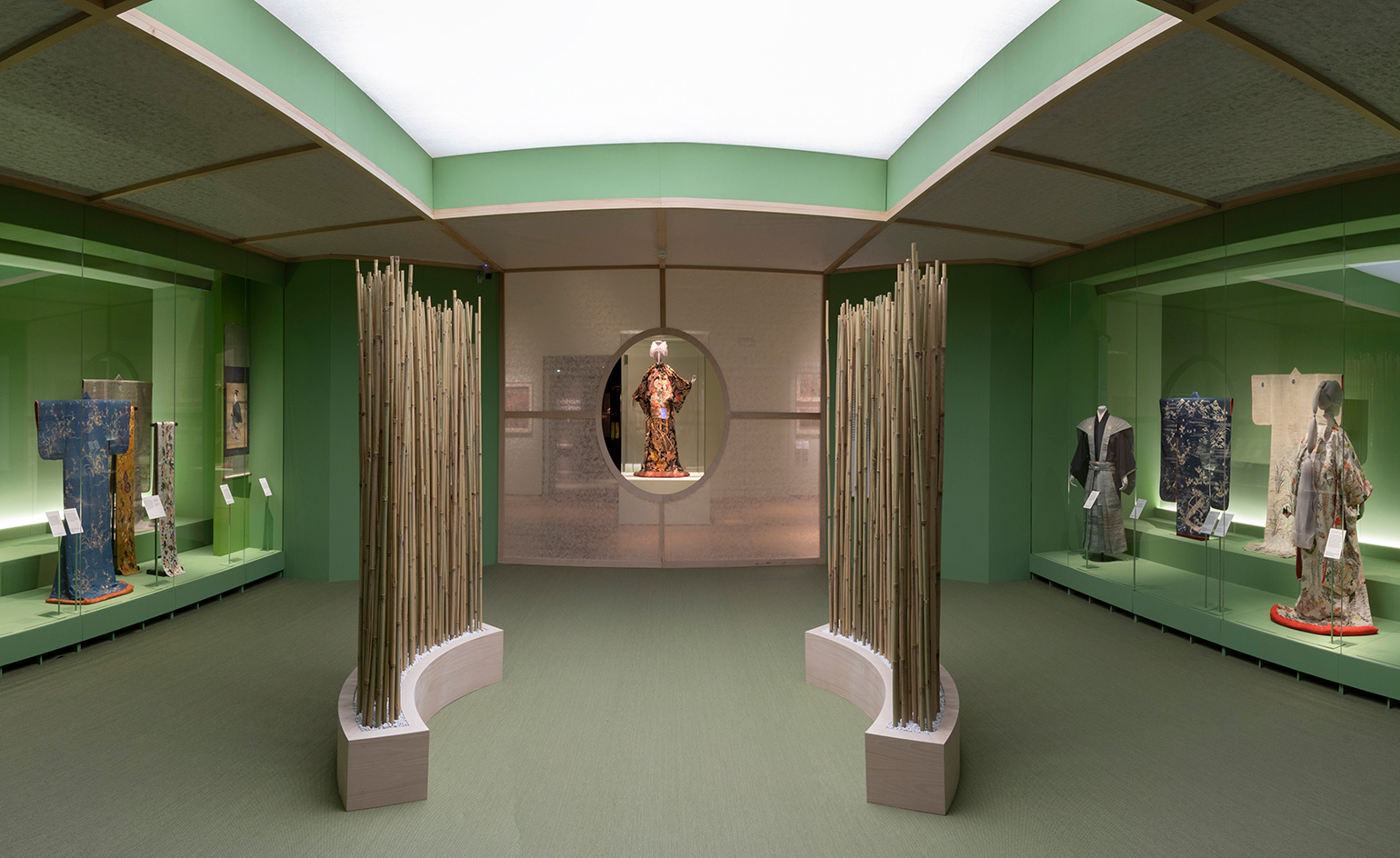
Stepping into the V&A’s new blockbuster exhibit is like being catapulted back centuries and across the ocean into 17th century Japan. Centre stage in the first room sits an intimate tea house, crafted from spun paper, which is set against a matcha green backdrop where freestanding bamboo accents punctuate the space; over the speakers, a custom audio was created to evoke the sounds that might have been heard at the time — horses clacking against rudimentary roads, china cups clinking and the sound of feet shuffling across tatami mats.
The immersive space is the handiwork of London-based set designer Robert Storey and his team, who were tasked by the V&A to bring the exhibition — which charts the kimono’s cultural relevance from 1660 Japan to today — to life. ‘We always think, "how do you create moments of wow?"' says Storey, referencing the tea house which has a circular peephole where visitors can peek inside; an identical window on the opposite side gives a view of a kimono in the adjacent room. (It’s just one of 300 items on display, from Paul Poiret’s flapper-era gold tunic to a 2015 wrap coat by Nigerian-born, London-based designer Duro Olowu.) ‘It’s a beautiful visual that goes all the way through it,' he says. ‘It’s a moment within the tea house, but the other window gives the excitement of what’s coming next. Our work is all about storytelling, and we had to create this narrative to make the exhibit feel discoverable.'
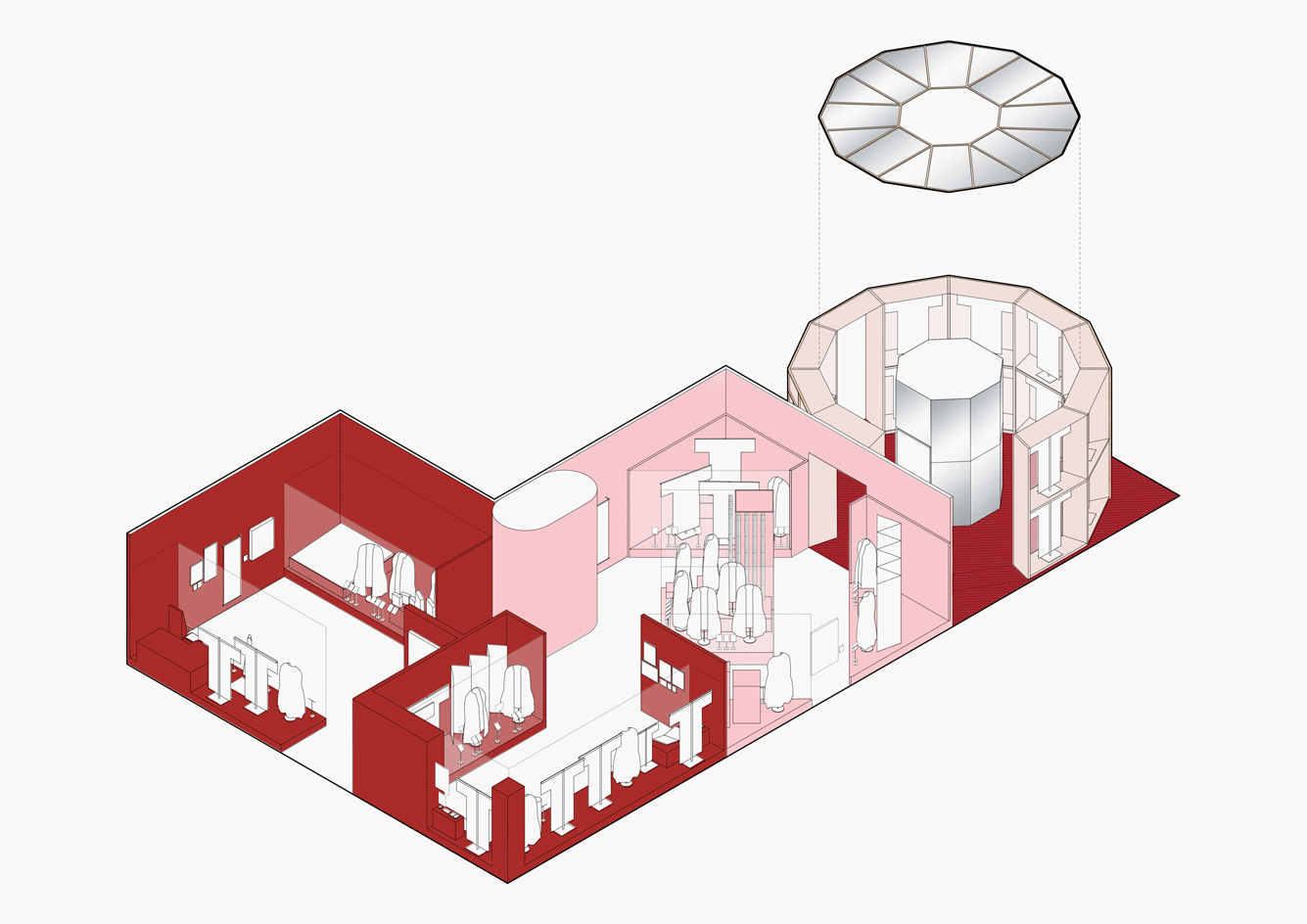
Some eight months in the making, it’s perhaps surprising that this is Storey Studios’ first ever exhibition; the Dalston-based team more frequently work with brands like Hermès and Nike on store windows and shop fits. But Tanya Eskander, lead designer on the exhibit, insists the two go hand in hand. ‘We approached it like we would a fashion show or like a store in a way,' she says. ‘Of course, we had to be sensitive to the objects and their history, and consider things being behind glass. But rather than it being a pastiche exhibit nodding to too many traditional things, it was important to reimagine it in a contemporary way.'
Key features of Japanese design are present throughout; from gravel taken from rock gardens to bamboo and woven flooring; even the graphic signs were printed on Japanese paper scrolls affied to beechwood structures. Within the exhibit, a mirrored ceiling and an angular mirrored column create all the drama of a runway show; reflecting and refracting the dozens of technicolour kimonos that decorate the walls. ‘The idea is that the kimono is coming from Asia to Europe, and it’s this idea of the kimono being reimagined and how they were reinterpreted,' says Storey. ‘So we created this meeting point of them looking at each other, reflecting them off each other within this central column, to symbolise that.'
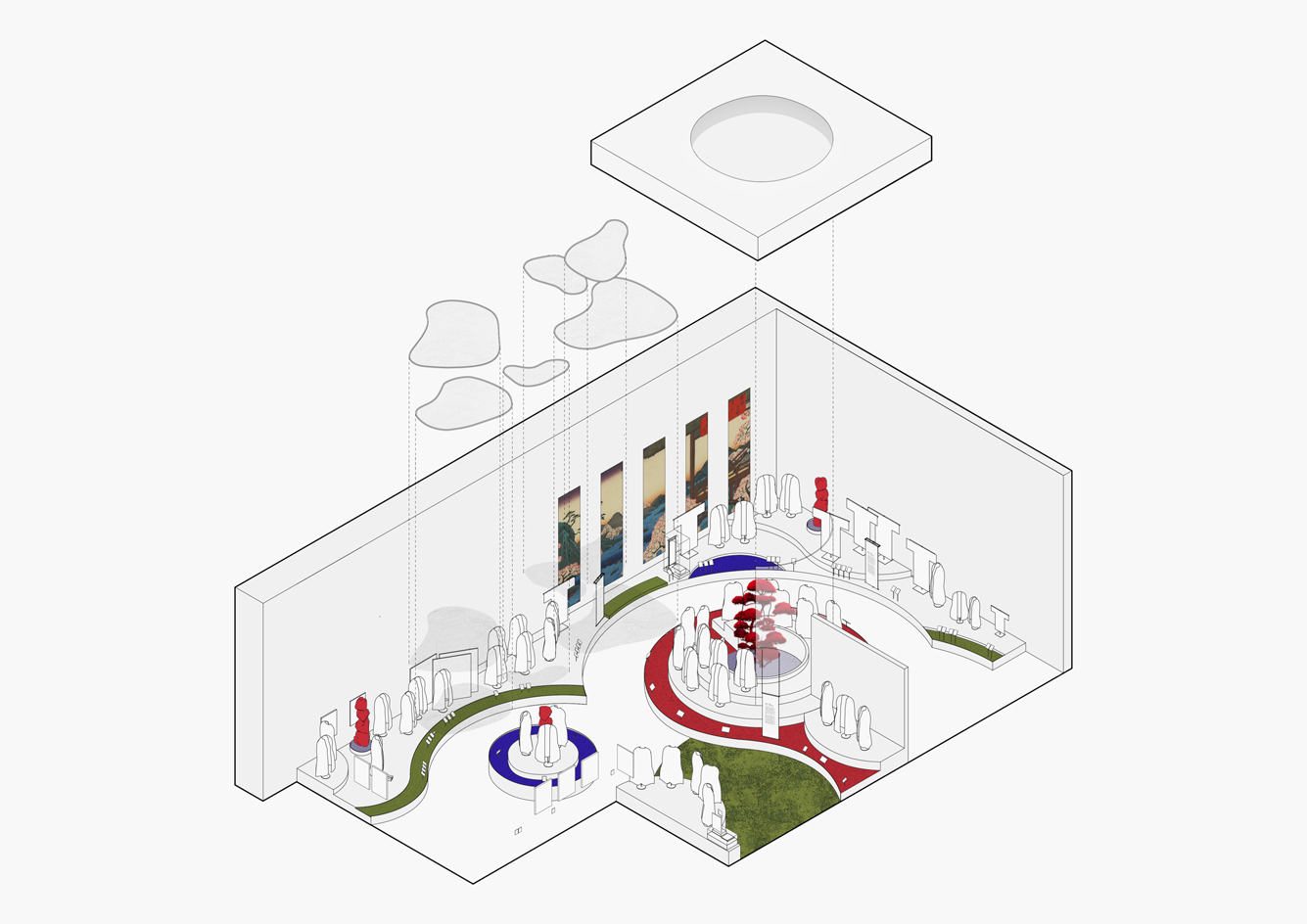
The exhibition’s set follows the chronology of the kimono’s sartorial history, with three rooms each communicating a different era. ‘With the tea room, the aim was for it to feel intimate in the beginning based on how the kimono was worn in a more private setting. Then we have the kimono in the world, which is its transition into the West,' says Eskander. ‘Lastly we have the kimono transformed, which is the kimono in theatre, dance, performance and film — it’s a future-ish, white space. The exhibit starts more private and opens up as you move through it,' she says, referring to the garment’s transition from ceremonial garb to becoming a mainstay in popular culture, seen in films like Star Wars and on the runways of Alexander McQueen. ‘It shows that the kimono is constantly evolving and changing,' she says.
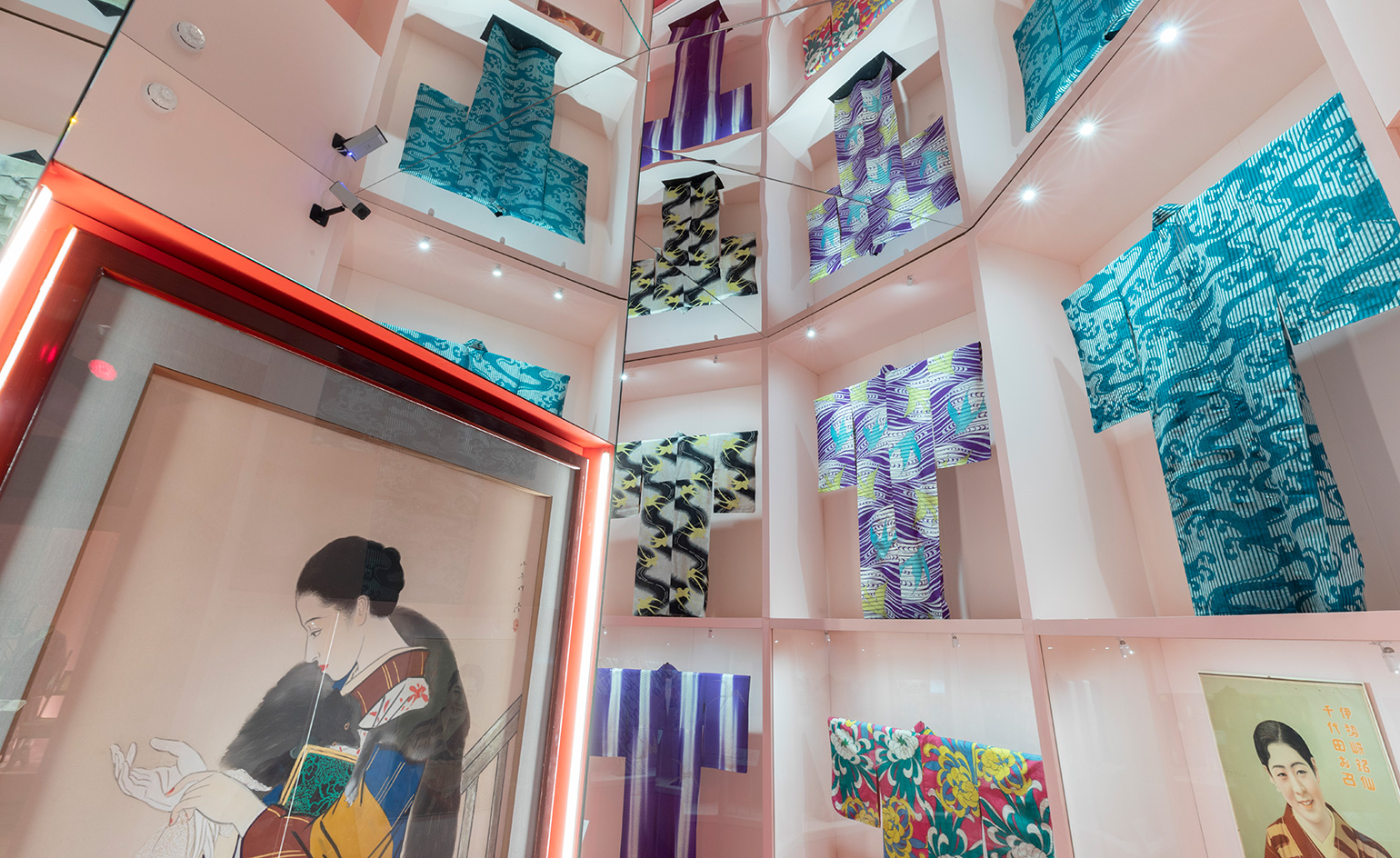
Kimono: Kyoto to Catwalk, installation view
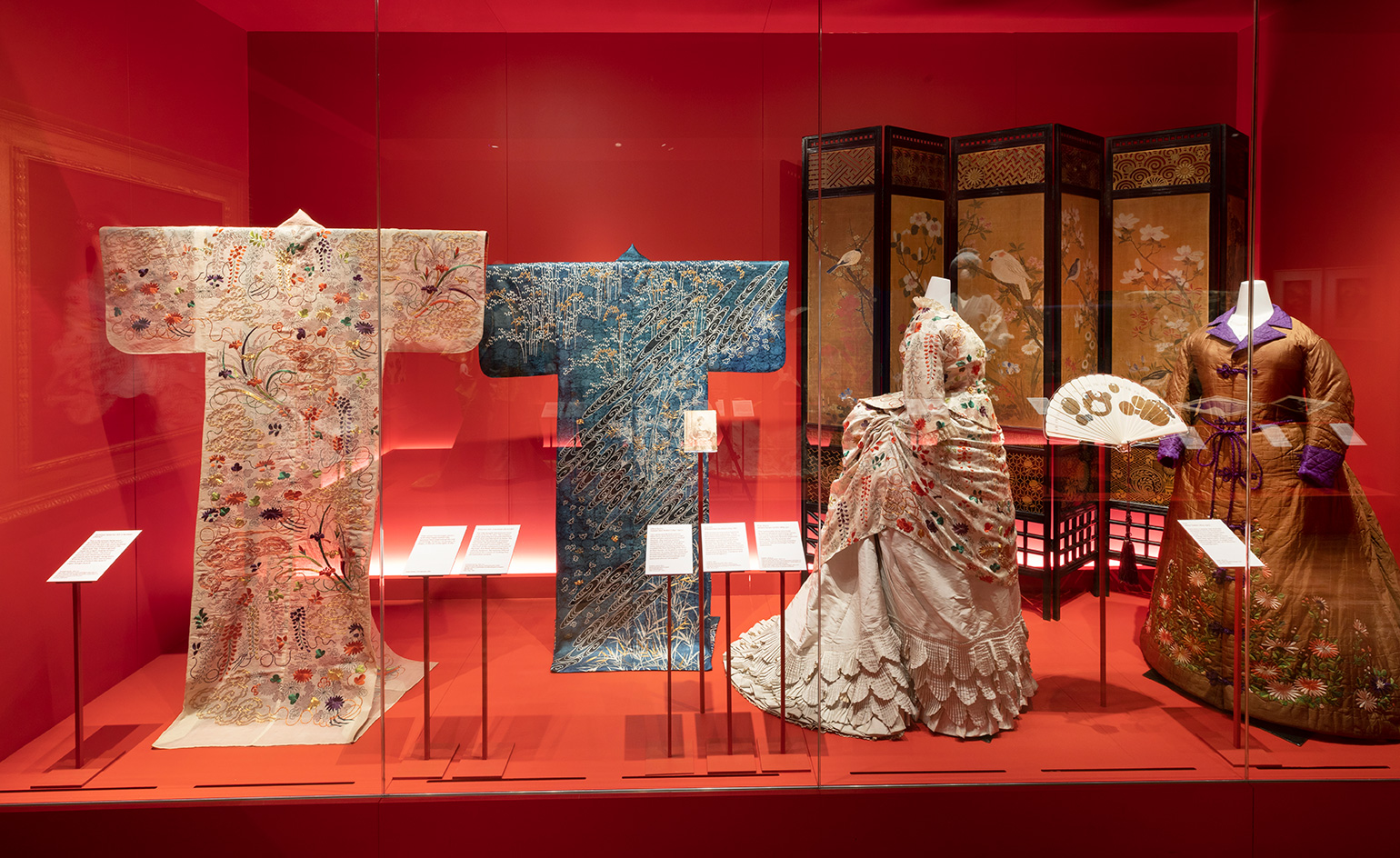
Kimono: Kyoto to Catwalk, installation view
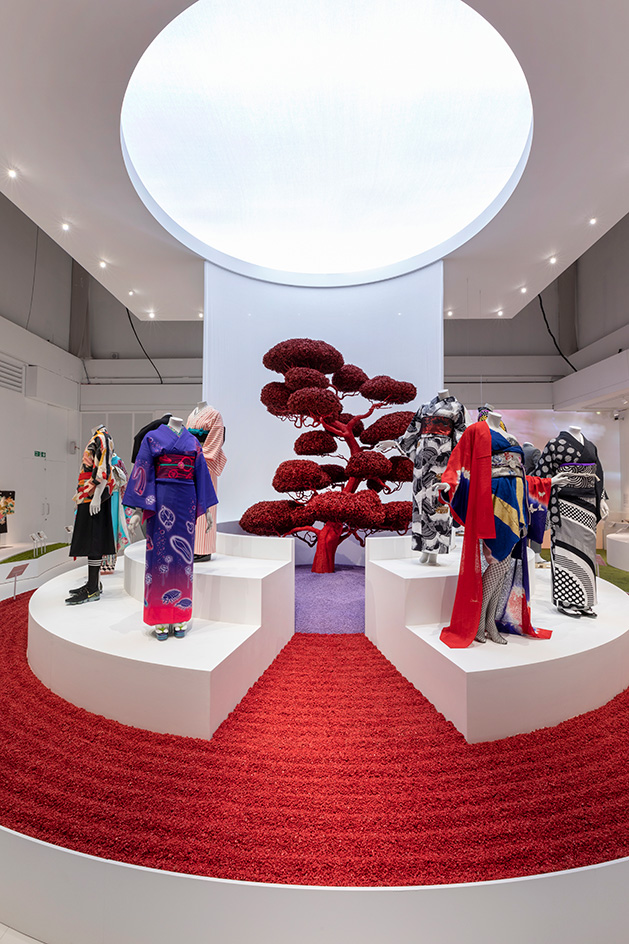
Kimono: Kyoto to Catwalk, installation view
INFORMATION
Kimono: Kyoto to Catwalk, V&A Museum, until 21 June. vam.ac.uk
ADDRESS
Victoria and Albert Musuem,
Cromwell Rd, Knightsbridge,
London SW7 2RL
Wallpaper* Newsletter
Receive our daily digest of inspiration, escapism and design stories from around the world direct to your inbox.
-
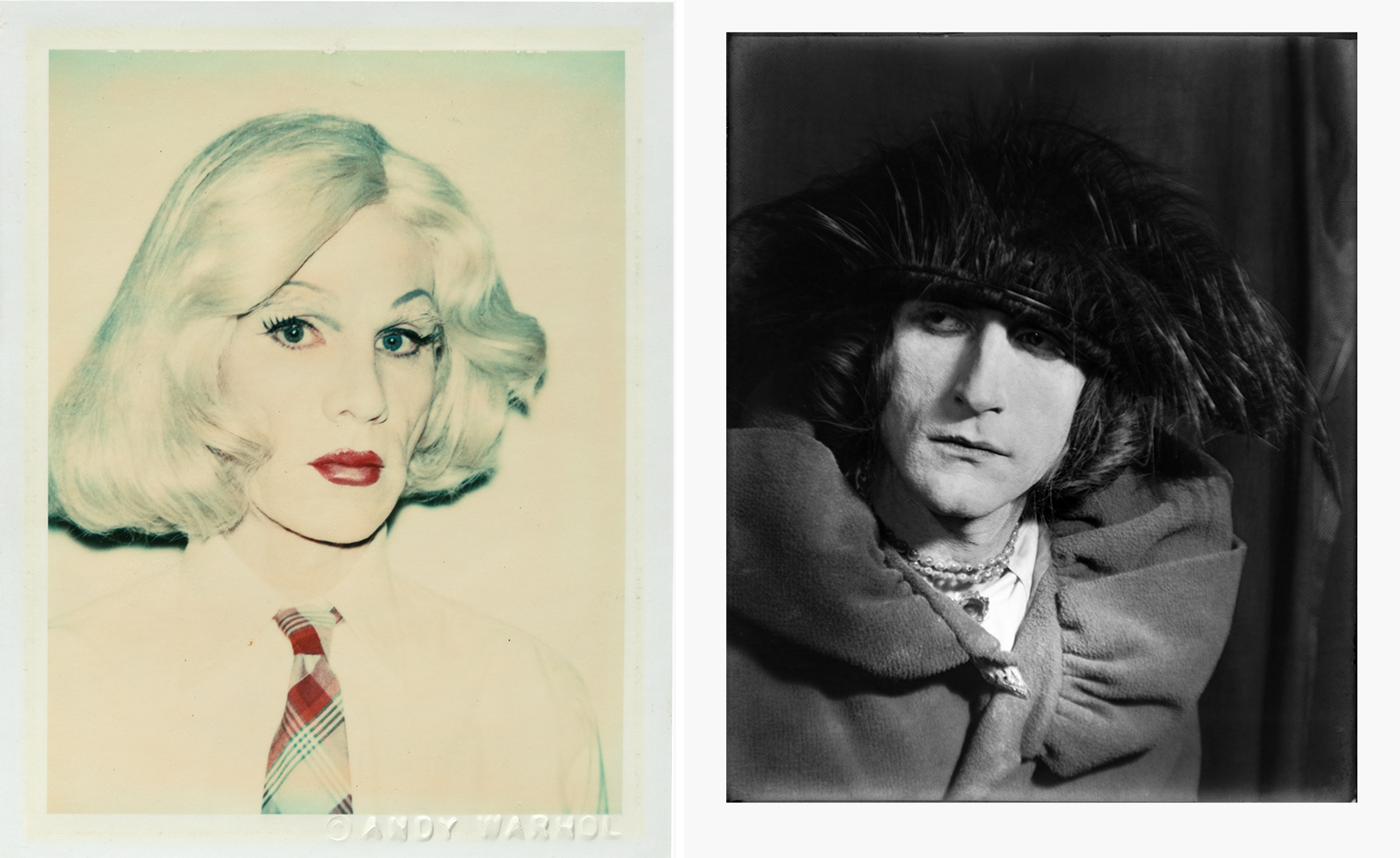 From Rembrandt to Warhol, a Paris exhibition asks: what do artists wear?
From Rembrandt to Warhol, a Paris exhibition asks: what do artists wear?‘The Art of Dressing – Dressing like an Artist’ at Musée du Louvre-Lens inspects the sartorial choices of artists
By Upasana Das
-
 Meet Lisbeth Sachs, the lesser known Swiss modernist architect
Meet Lisbeth Sachs, the lesser known Swiss modernist architectPioneering Lisbeth Sachs is the Swiss architect behind the inspiration for creative collective Annexe’s reimagining of the Swiss pavilion for the Venice Architecture Biennale 2025
By Adam Štěch
-
 A stripped-back elegance defines these timeless watch designs
A stripped-back elegance defines these timeless watch designsWatches from Cartier, Van Cleef & Arpels, Rolex and more speak to universal design codes
By Hannah Silver
-
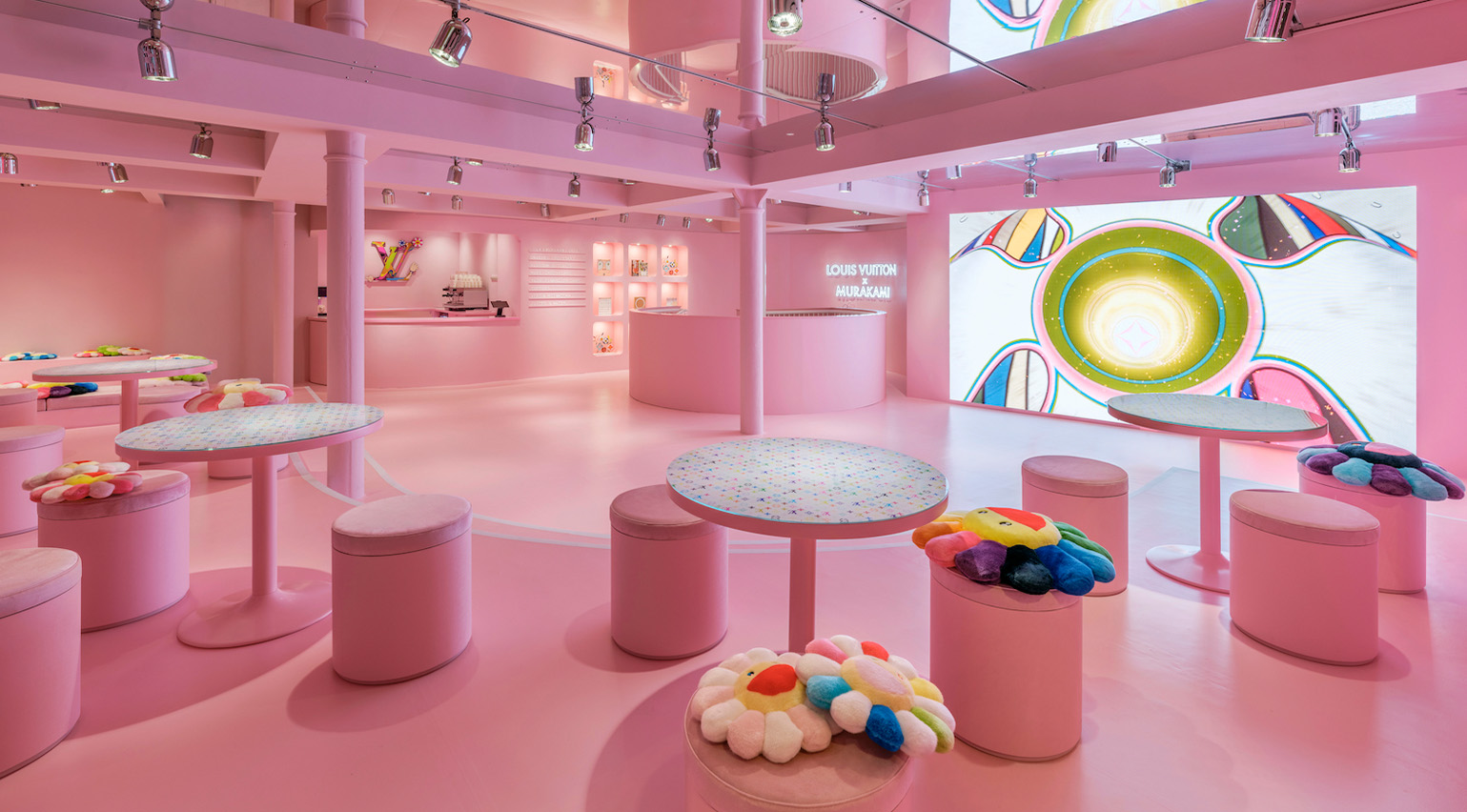 Inside Louis Vuitton’s Murakami London pop-up, a colourful cartoon wonderland with one-of-a-kind café
Inside Louis Vuitton’s Murakami London pop-up, a colourful cartoon wonderland with one-of-a-kind caféWallpaper* takes a tour of the Louis Vuitton x Murakami pop-up in London’s Soho, which celebrates the launch of a new ‘re-edition’ accessories collection spanning the greatest hits from the Japanese artist’s long-running collaboration with the house
By Jack Moss
-
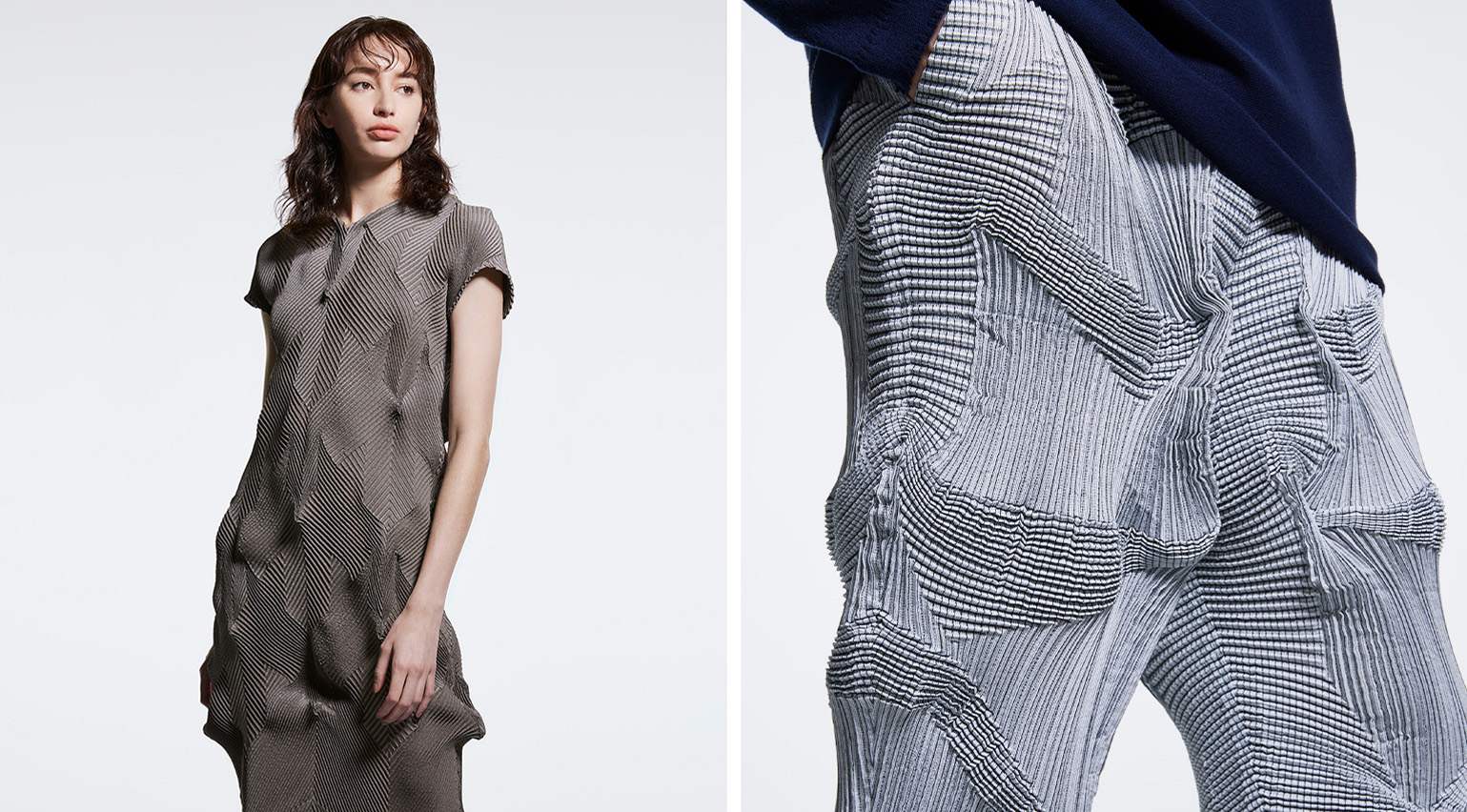 Get to know Issey Miyake’s innovative A-POC ABLE line as it arrives in the UK
Get to know Issey Miyake’s innovative A-POC ABLE line as it arrives in the UKAs A-POC ABLE Issey Miyake launches in London this week, designer Yoshiyuki Miyamae gives Wallpaper* the lowdown on the experimental Issey Miyake offshoot
By Jack Moss
-
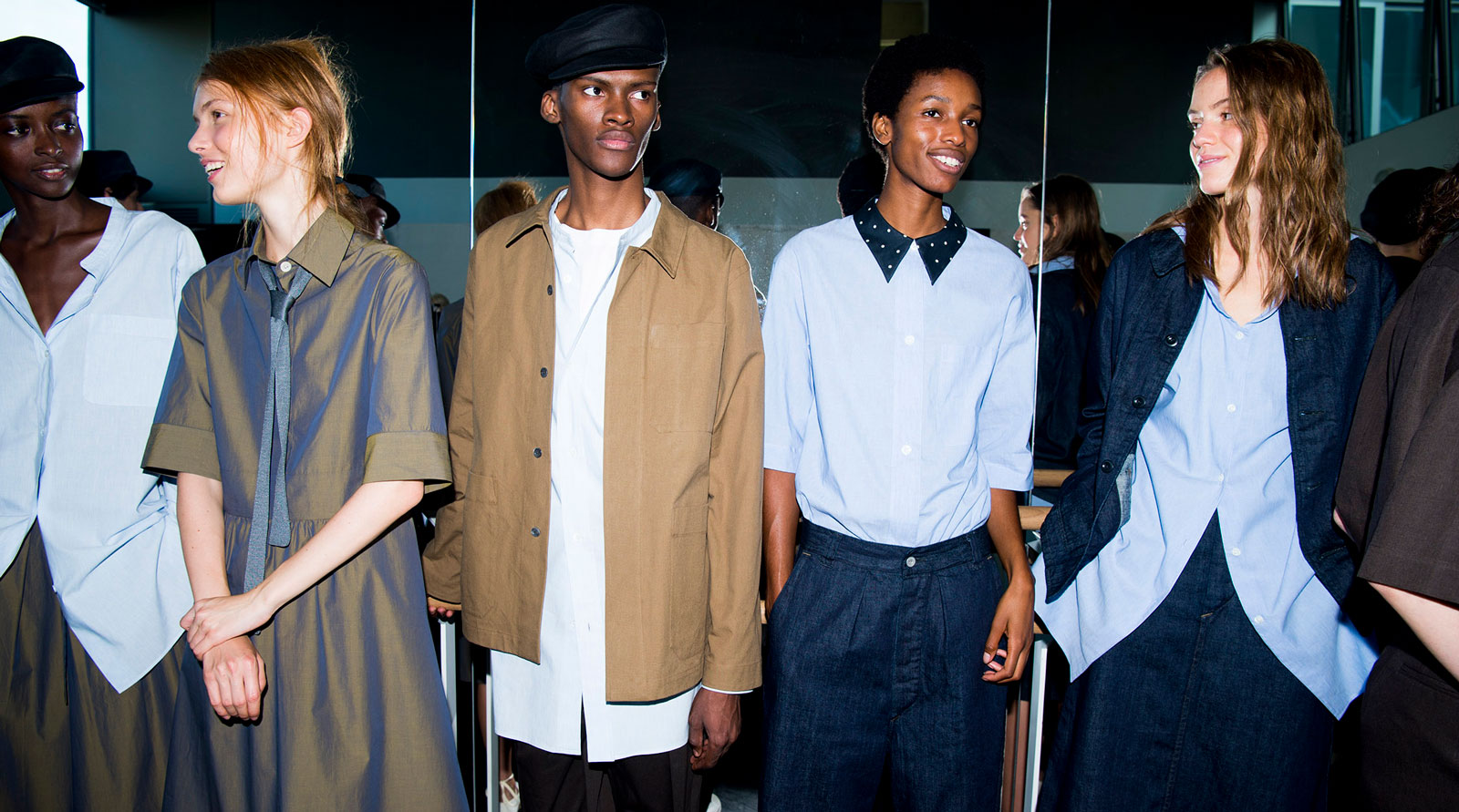 Margaret Howell London Fashion Week Women's S/S 2019
Margaret Howell London Fashion Week Women's S/S 2019By Dal Chodha
-
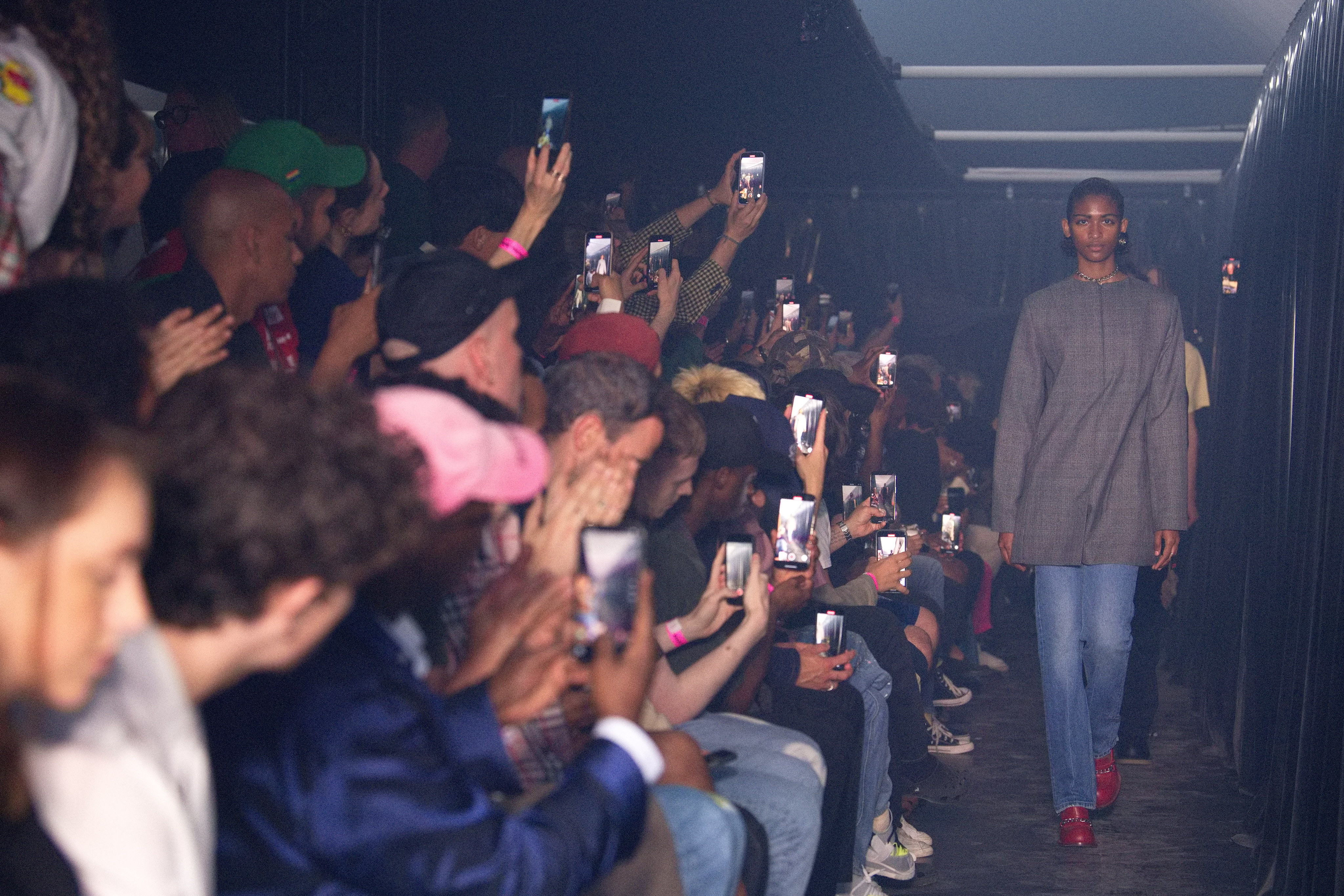 London Fashion Week S/S 2023: Ahluwalia to Martine Rose
London Fashion Week S/S 2023: Ahluwalia to Martine RoseThough slimmed-down, London Fashion Week nonetheless provided the moments of creative expression the city is known for – from Ahluwalia’s ode to Africa to Martine Rose’s much-anticipated runway return
By Jack Moss
-
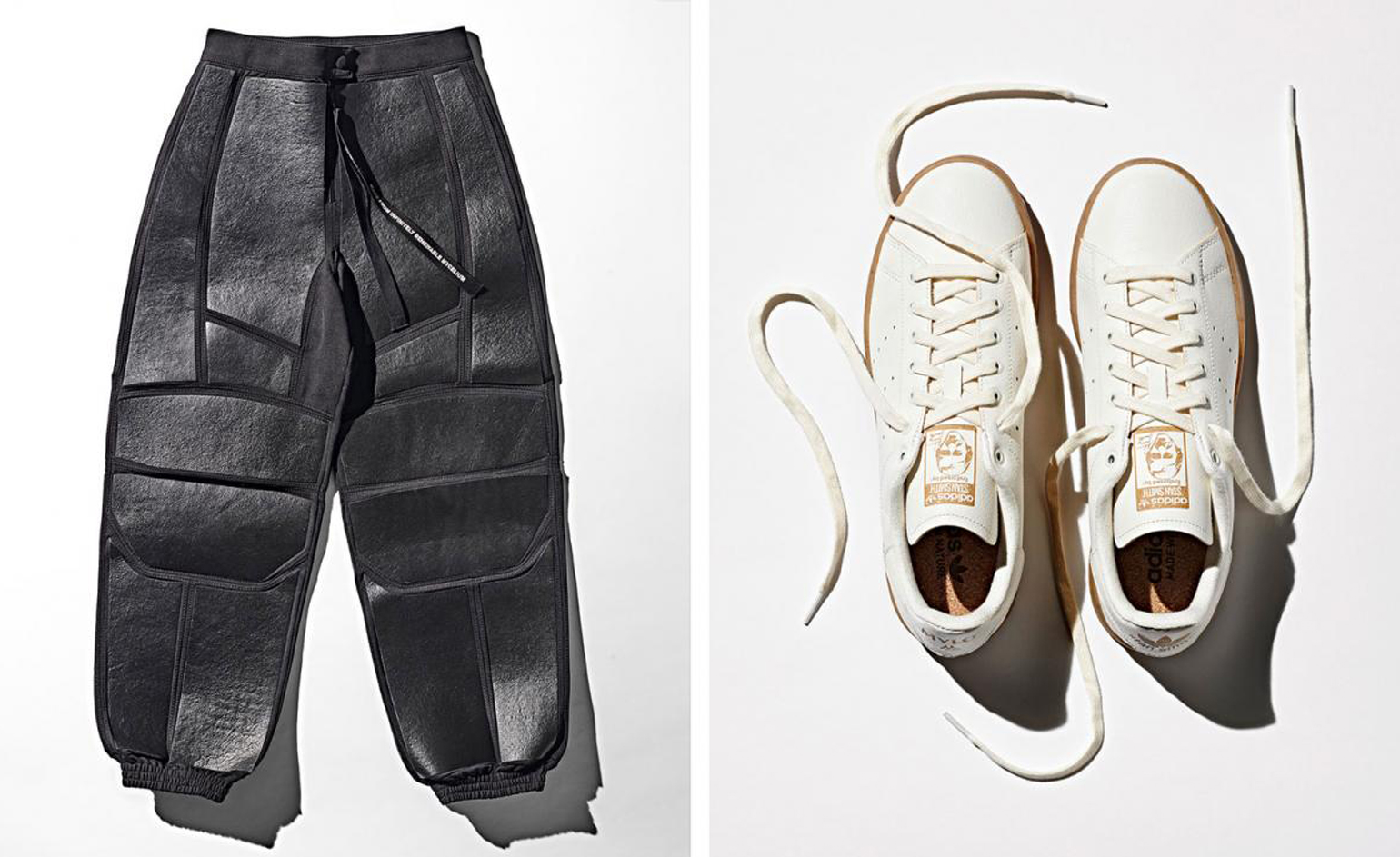 Discover these fashion brands at London Craft Week
Discover these fashion brands at London Craft WeekDuring London Craft Week, fashion brands including Smythson, Bally and Serapian are hosting events across the capital
By Hannah Silver
-
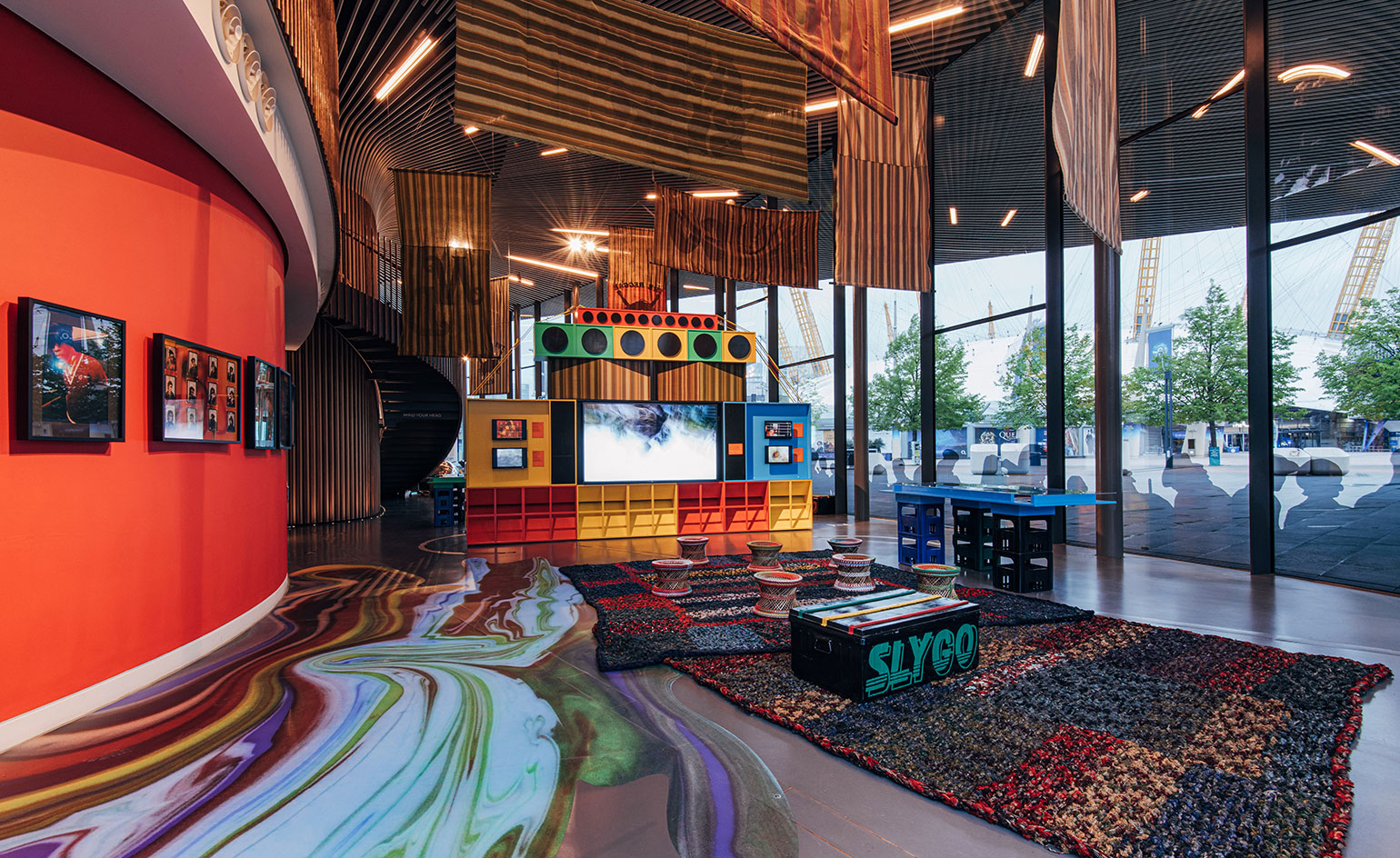 Nicholas Daley's multicultural roots celebrated in London
Nicholas Daley's multicultural roots celebrated in LondonBy Laura Hawkins
-
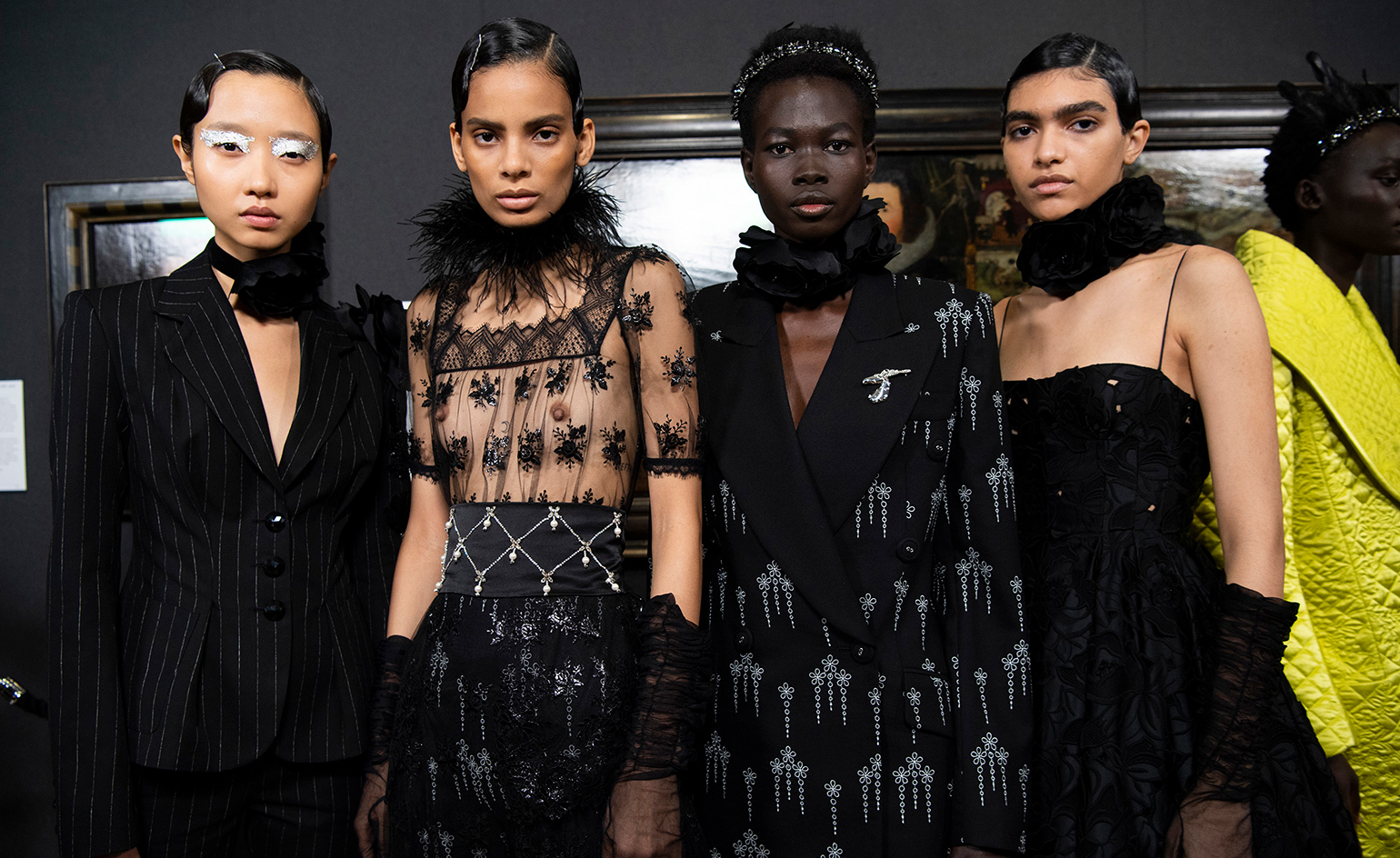 Erdem A/W 2020 London Fashion Week Women's
Erdem A/W 2020 London Fashion Week Women'sBy Laura Hawkins
-
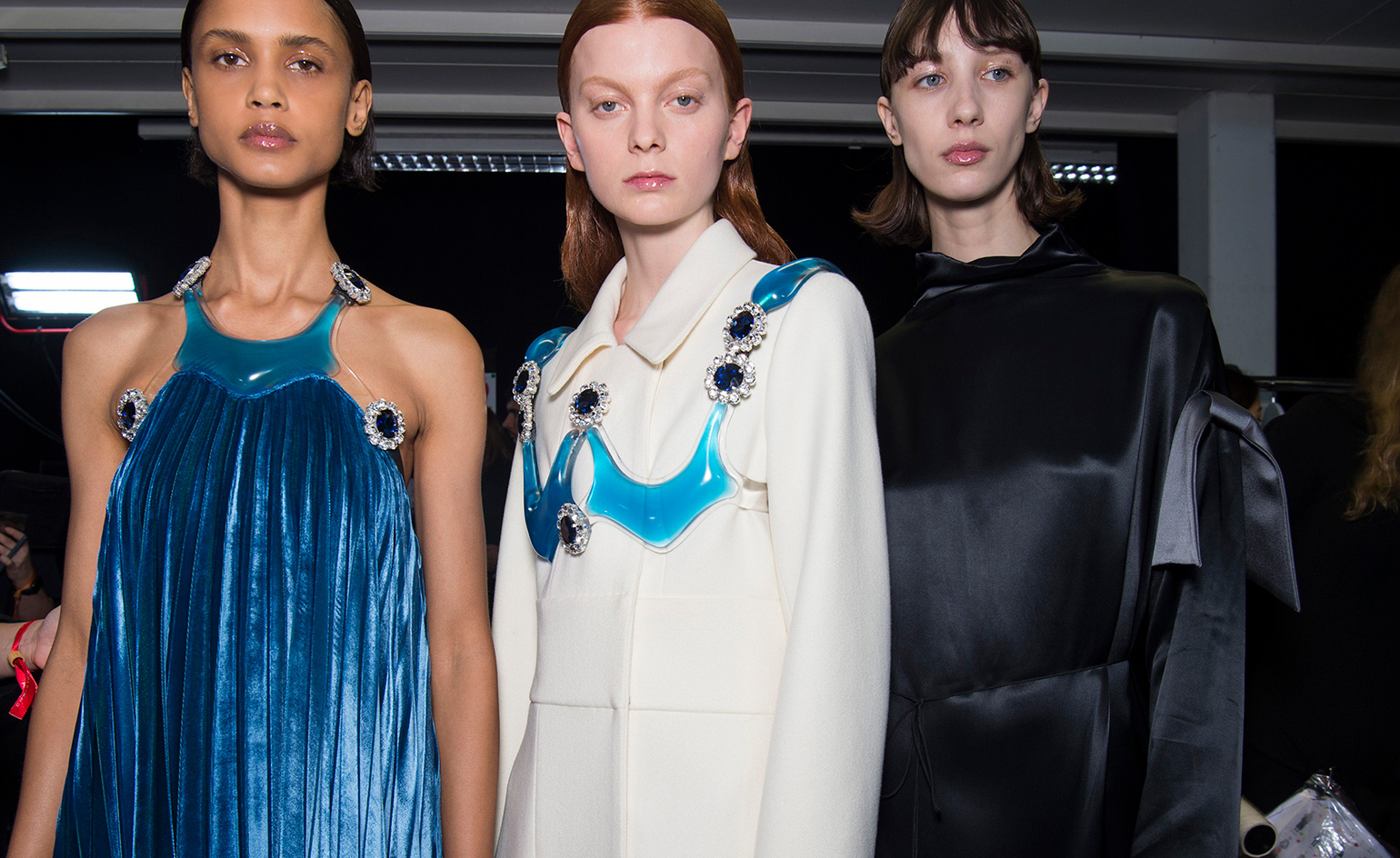 Christopher Kane A/W 2020 London Fashion Week Women's
Christopher Kane A/W 2020 London Fashion Week Women'sBy Laura Hawkins